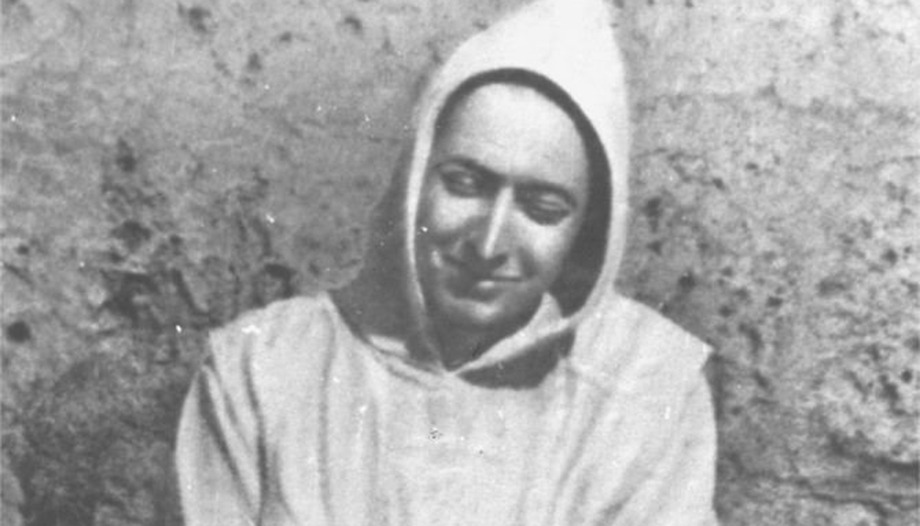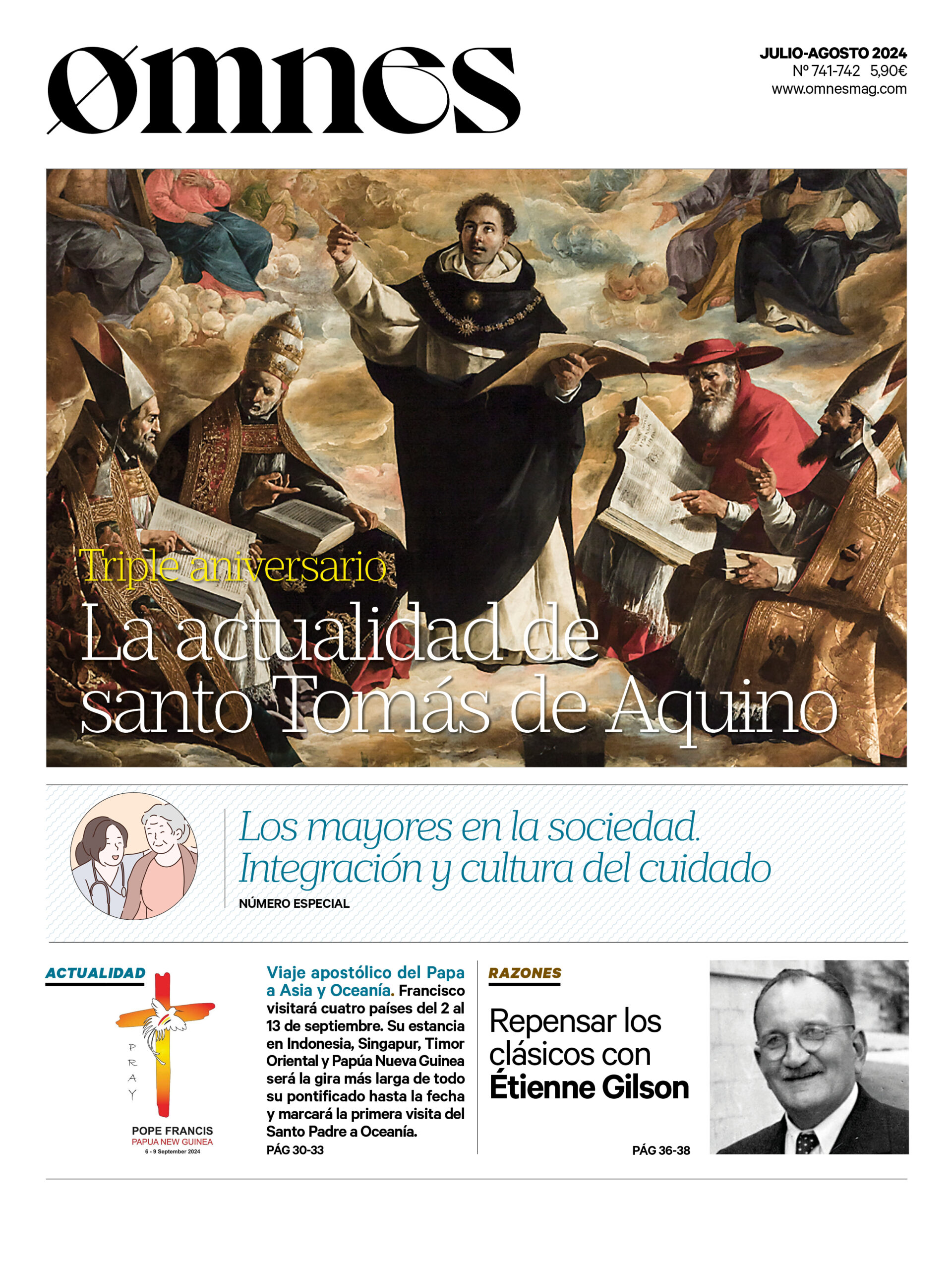Rafael Arnaiz Baron is one of the great mystics of the 20th century. Commonly known as Brother Rafael, he was born in Burgos on April 9, 1911 and baptized in the church of Santa Gadea on the 21st of the same month. He was the first son of the four children born to Rafael Arnáiz and Mercedes Barón. Don Rafael, who also studied law, worked as a forestry engineer. Doña Mercedes was a columnist in some newspapers and magazines, writing frequently in the society pages.
Children and youth
Rafael made his first communion in the church of the Visitation of the Salesas Monastery, in Burgos, on October 25, 1919. A year later he entered the Jesuit school in Burgos. There he was a member of the Congregation of Mary Immaculate and received awards for his application to study and good conduct. However, he spent almost his entire first year ill, first with colibacillary fevers and, as soon as he was cured, with a pleurisy he had been suffering from. When he finally recovered completely, his father took him to the Pilar de Zaragoza to thank the Virgin for his recovery. Then in October 1921, Rafael was able to resume his studies.
The following year the family moved to Oviedo. There he entered the San Ignacio de Loyola School of the Society of Jesus as an external student. When he was fifteen years old, he began, at his own request, to receive drawing and painting classes from the painter Eugenio Tamayo. In 1929 he finished high school and enrolled in the School of Architecture in Madrid, a career in which he mixed his passion for art with science.
When he was 18 years old, Rafael went to spend the summer in Avila. He stayed with his aunt and uncle, the Dukes of Maqueda, to whom he was always very close. He then made a tour of Castile, stopping mainly in Salamanca to admire the architectural works of the city. Later, back in Avila, he painted stained glass windows for his family's chapel.
The seed of vocation
His uncle had just translated a book from French into English. From the Battlefield to the Trappe. It is about a French captain decorated for his bravery who renounced his decorations to enter as a lay brother in the Trappe de Chambarand. The Duke asked his nephew to make a cover for it. The reading made such an impression on Rafael that he wanted to make a pilgrimage to the Trappist monastery of San Isidoro de Dueñas (Palencia). This visit would sow in him the seed of his vocation as a Carthusian monk.
He continued his studies and did his military service in Madrid. The Second Republic was presided over in those years by a markedly anti-clerical and Marxist government. The environment that Rafael found around him was not exactly favorable for his purposes. We know an anecdote that happened in the "Pensión Callao" where he lived while he was studying architecture in Madrid. One afternoon when he arrived at the pension, an Argentine girl who was staying in the same residence went into his room with the intention of seducing him.
Later he would say, in clear reference to this episode and others unknown to us: "If not for a miracle of the Blessed Virgin, it would have been impossible for me to escape the clutches of the enemies of the soul who tried to snatch from me the treasure of grace and the freedom of the heart.". Shortly after, she opted for the contemplative religious vocation and on January 16, 1934, she entered the monastery of Palencia.
Life at the Charterhouse
Life in the Carthusian monastery is hard and disciplined. The monks dedicate themselves especially to prayer interfered by study and work, normally in solitude, except for the conventual Mass and some prayers. On Sundays and major feasts they all eat together and have an hour of recreation. Once a week they take a long walk outside the cloister. As mortification they have the perpetual abstinence of meat and to get up at midnight.
Brother Rafael lived the monastic life in an exemplary manner from the very beginning and wrote in those years numerous spiritual and mystical texts that are still very popular and well known today, a magnificent legacy for souls thirsty for spirituality. A luminous and lively motto is written in them ad nauseam. "Only God! Only God! Only God! Only God!" But due to his delicate health - a virulent diabetes - he had to leave the monastery three times, only to return again, but always with a very fragile health.
On April 26, 1938, around seven o'clock in the morning, he ended his days as a result of a diabetic coma; although it was rather the love of God that consumed him. He was 27 years old. He was buried in the cemetery of this Cistercian monastery.
The ascent to the altars
His beatification process began in 1965 and culminated in April 1967. The Pope John Paul II declared him blessed on September 27, 1992, after recognizing a miracle of a young girl from Palencia. After being run over by a tractor she was miraculously cured after entrusting herself to Brother Rafael.
Years later, Benedict XVI accepted a new miracle attributed to him that served for his canonization. It was the unexplained cure of Begoña León Alonso, a 38-year-old woman from Madrid, who was ill with Hellp syndrome during her pregnancy. When she underwent surgery to save her daughter on December 25, 2000 at the Gregorio Marañón Hospital, her liver and kidneys were paralyzed, she suffered cerebral infarctions and was left in a state of brain death.
The surgeon then informed Begoña's parents that there was no hope of saving the mother's life. The girl, although born healthy, weighed only 1 kilo and 200 grams, but she could gain weight in the incubator. One of Begoña's friends visited the Monastery of San Bernardo in Burgos and asked the nuns to pray for the healing of her friend, but entrusting her only to Brother Rafael. The prayers were answered and Begoña began to recover on January 6. The improvement was so complete that she was left with no sequelae of this very serious illness. Brother Rafael was canonized on October 11, 2009.












